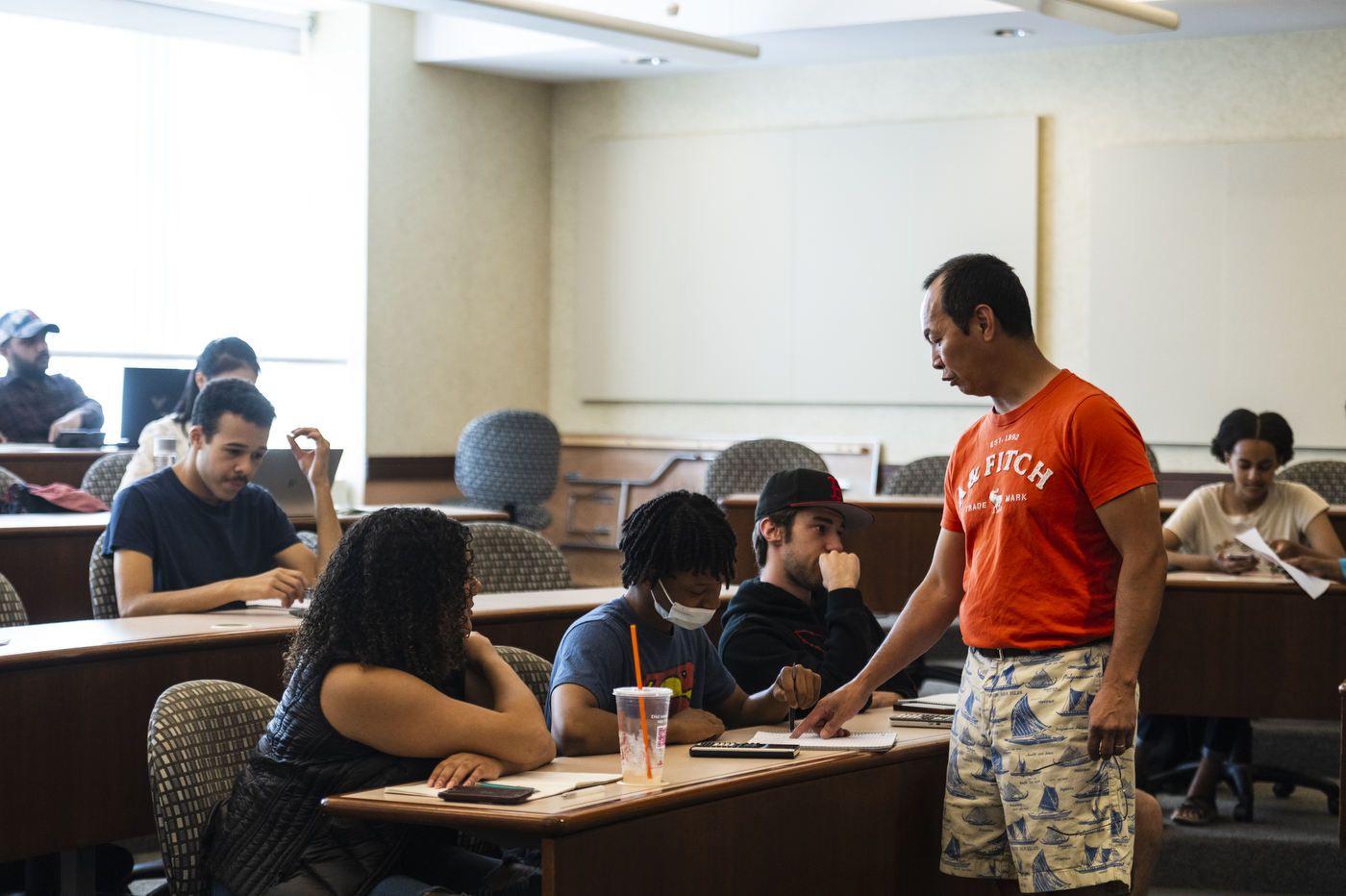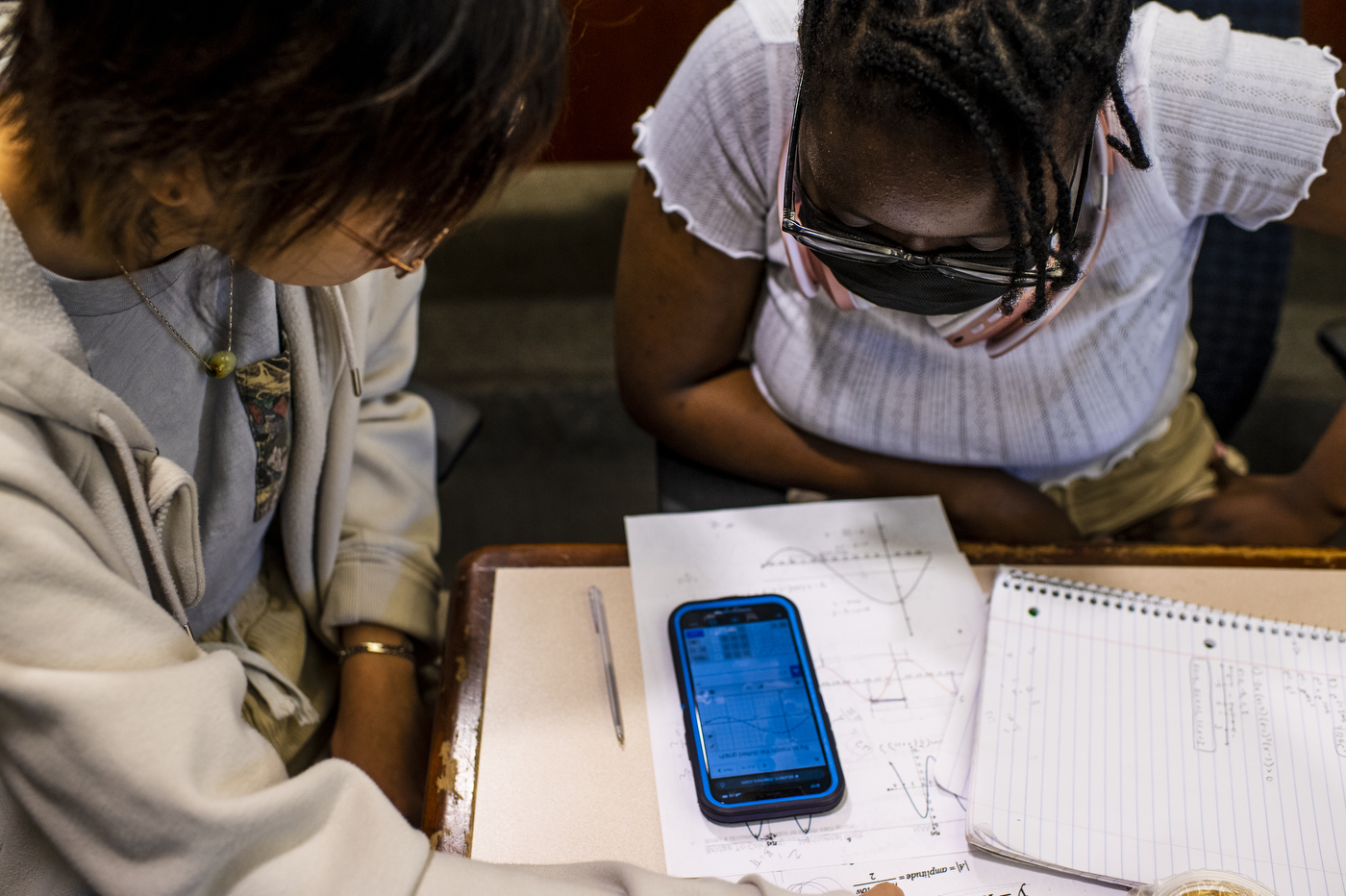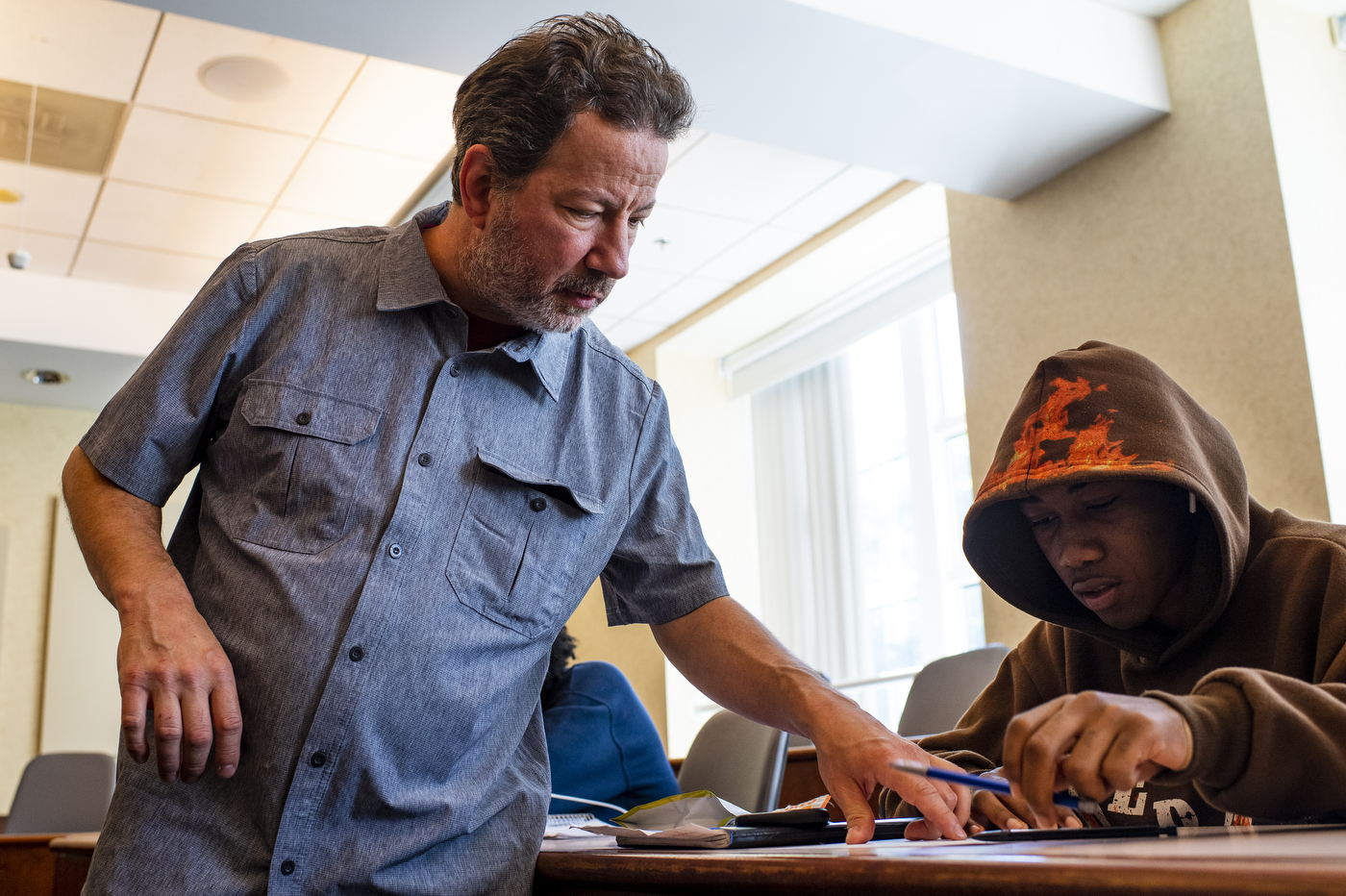Northeastern’s Bridge to Calculus helps Boston public school students traverse calculus chasm

In 1994, Northeastern mathematics professor Robert Case noticed something: high schools in the Boston suburbs had Advanced Placement calculus programs, while inner-city schools did not. So Case decided to do something about it.
Inspired by the work of civil rights activist Bob Moses, Case proposed a Bridge to Calculus, a summer program that would offer students, who might not have access to AP math curricula, a free summer program at Northeastern.
The goal from the beginning has been “to mirror the high school student population in the Boston public schools,” says professor Egon Schulte, chair of the Northeastern Mathematics Department.
But there was a problem: Many of the students interested in the course also needed to hold down jobs to support both themselves and their families. The solution? Ask them to come in at 7:30 a.m. The Bridge to Calculus program runs three hours a day, Monday through Friday, for six weeks each summer.
Rajini Jesudason, Bridge to Calculus program director, says that you might expect high school students to balk at the prospect of a summer math class, let alone a voluntary one so early in the morning, but that hasn’t been the case.



The program, which began with about 20 students, has grown to include 14 schools and nearly 100 participants, almost 20 years later.
Math teachers sometimes “come with a little bit of a reputation,” says Robert Ellis, a math teacher at Boston’s New Mission High School, who graduated from Northeastern’s College of Professional Studies with a master’s in education in 2010 and who taught in the Bridge to Calculus program for the first time this year.
But because the Bridge to Calculus program is taught by teachers from the Boston Public Schools and not by college professors, students get to know their math teachers over the summer, which helps remove the stigma that can sometimes cloak math instructors, Jesudason says.
Since the program is taught by BPS teachers, students can’t get college credit for the program—but this is a feature, not a bug. “We don’t want them to check out of AP calculus,” Jesudason says. By returning to the public school system with their new skills, the students improve the quality of the whole system, from the inside.
It’s a benefit for the teachers, too, who gain experience working closely with university mathematics faculty, not to mention summer employment. Mathematics department faculty, like Jesudason, serve as substitutes when needed.

Jesudason has noticed that some of the teachers take the Bridge to Calculus program as an opportunity to observe other classes and come in to watch Northeastern faculty teach their courses. This means that a whole cohort of high school teachers are also getting more training.
The program has had an impact not only on the students and teachers directly involved in the course, but on their classmates, and even on the high schools they return to.
For Ellis, who first observed Bridge to Calculus classes in 2008, the program forced his school to reflect on its own math offerings. “Bridge to Calculus really helped us make the leap… now that we know we want to get kids to calculus, how do we do it internally?”
Students who come to Northeastern to study pre-calculus material return to their own schools not only more knowledgeable, but equipped to help their classmates with the material, thus raising the bar for an entire classroom.
The result? More AP calculus courses taught in Boston schools, and more students getting into—and getting prepared for—college.
And it all goes back to Case’s insistence that, if students were offered an opportunity, they would take it and flourish, Jesudason says.
“Bob’s design is so simple, but so thoughtful,” she says. “You bring students from the school system into a university, and then they go back into the school system. [The Bridge to Calculus program] provides kids an opportunity, and they take it from there. And the whole system changes.”
For media inquiries, please contact media@northeastern.edu.






